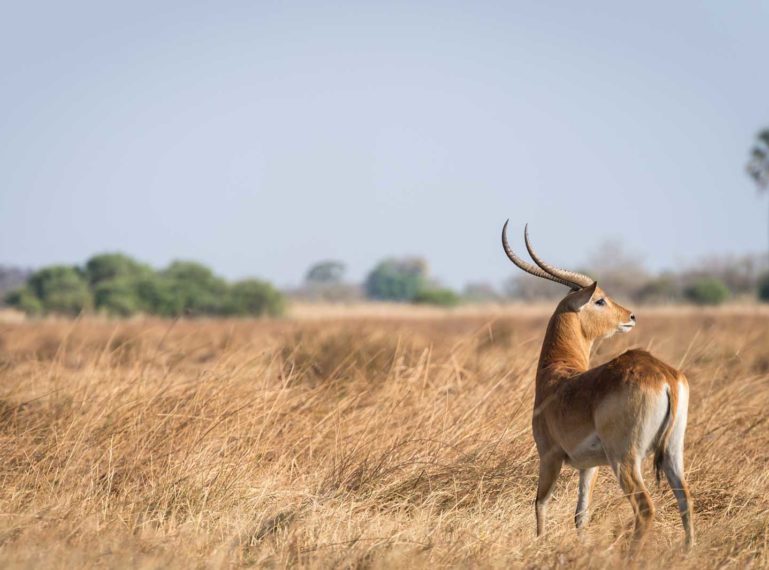
The red lechwe is a water-loving antelope, uniquely adapted to living in wetland areas like the Okavango Delta. Their powerful hind legs and thick, oily fur makes them especially adapted to leaping through water and marshy areas. At Xobega Island Camp, a herd of red lechwe was seen grazing near the muddy puddles of a Delta island, making it a true Okavango safari experience!
This antelope is a relative of the waterbuck – the antelope with a distinct ‘toilet seat’ ring around its rear end. The heart-shaped nose of the lechwe, as well as the puku, are identical to that of the waterbuck, and the special anti-water-logging fur are clear indications of the familial relationship between these buck. Red lechwe have long, splayed hooves which help them gain traction and move quickly through marshy areas. The males have impressive horns, while the females (like the waterbuck) do not possess horns, making the genders easily identifiable.
Red lechwe calfs are born just as the high water is receding in the Delta, and fresh, new grass is available for feasting. A single calf is born to a female and lies in hiding for a couple of weeks before the female and her young one rejoin the herd. Many antelope give birth to young that are ready to run with the herd within the same day as being born, but these calfs require a lying up period before they are strong enough to travel. The mother will return to the calf’s hiding place to feed her young during the first 3 weeks of life.
This is a true Delta sighting at Xobega Island Camp!





Leave a Comment